Planning your own trip? Prepare for your trip
Use Rough Guides' trusted partners for great rates
Book your individual trip, stress-free with local travel experts
Barcelona — Spain’s second city and the self-confident capital of Catalunya—vibrates with life. No other city in the country matches its sheer style, energy, and creativity.
Long known as Spain’s avant-garde capital, Barcelona boasts world-class art museums, a legendary football team, and a cutting-edge scene of designer restaurants, bars, galleries, and shops that set the trends rather than follow them.
Not sure how long to stay in Barcelona to take it all in? Plan enough time to explore both its cultural highlights and vibrant street life — you won’t run out of things to do.
In terms of things to do in Barcelona, in Antoni Gaudí’s extraordinary church of the Sagrada Família, the winding alleys and ageing mansions of the picture-postcard Gothic Quarter, and the world-famous boulevard that is the Ramblas, you have three sights that are high up any Spanish sightseeing list. There's also great things to do for free in Barcelona such as the magic fountains or creating your own modernist house hop.
As a thriving port, prosperous commercial centre and buzzing cultural capital of three million people, the city is almost impossible to exhaust – even in a lengthy visit you will likely only scrape the surface.
Book tickets and tours in Barcelona
Everyone starts with the Ramblas, and then dives straight into the medieval nucleus of the city, the Barri Gòtic (Gothic Quarter), but there are plenty of other central old-town neighbourhoods to explore, from La Ribera – home to the celebrated Museu Picasso – to funky El Raval, where cool bars, restaurants and boutiques have mushroomed in the wake of the striking contemporary art museum, MACBA. Even if you think you know these heavily touristed neighbourhoods well, there’s always something else to discover – tapas bars hidden down alleys little changed for a century or two, designer boutiques in gentrified old-town quarters, bargain lunches in workers’ taverns, unmarked gourmet restaurants, craft outlets and workshops, fin-de-siècle cafés, restored medieval palaces and neighbourhood markets.
But endlessly fascinating as these districts are, Barcelona is so much more than just its old-town areas. The fortress-topped hill of Montjuïc, for example, contains the Olympic stadium used for the 1992 Games as well as some of the city’s best art museums, notably MNAC, ie the Museu Nacional d’Art de Catalunya – note the word “nacional”, which tells you all you need to know about Catalunya’s strong sense of identity. Other museums too explore the work of internationally famous Catalan artists, from Joan Miró to Antoni Tàpies, while in the nineteenth-century, uptown extension of the city – the Eixample – are found most of Barcelona’s celebrated modernista architectural wonders, from private houses to Gaudí’s peerless church.
If Barcelona sounds a bit too much like hard cultural work, then simply look instead for entertainment to the city’s harbour, parks, gardens and beaches. Indeed, it’s remarkably easy to forget you’re in a big city at all some times – just to take one example, walking from the Port Vell harbour takes you along the marina, through the old fishing and restaurant quarter of Barceloneta, past the leafy Parc de la Ciutadella, and out along the beachside promenade to the bar-and-restaurant zone that is the Port Olímpic.
Other easy city jaunts include a trip out to the Diagonal Mar conference and exhibition district for the new natural science museum, or up to the distinctive neighbourhood of Gràcia, with its small squares, lively bars and Gaudí’s amazing Parc Güell. If you’re saving yourself for just one aerial view of Barcelona, wait for a clear day and head for Tibidabo, a mountain-top amusement park backed by the Collserola hills, while beyond the city limits the one day-trip everyone should make is to the mountain-top monastery of Montserrat, 40km northwest.
If you're planning a trip to Spain, don't miss our Spain itineraries and information on how to get there.
Barcelona is an established city-break destination with a year-round tourist, business and convention trade. Different seasons have different attractions, from summer music festivals to Christmas markets, but there’s always something going on.
As far as the weather is concerned, the best time to visit Barcelona is late spring or early autumn, when the weather is still comfortably warm (around 21–25°C) and walking the streets isn’t a chore. There might be a chill in the air in the evening, but Barcelona in these seasons is sometimes nigh on perfect.
However, in summer the city can be unbearably hot and humid, with temperatures averaging 28°C (but often a lot more). August, especially, is a month to be avoided, since the climate is at its most unwelcoming and many shops, bars and restaurants close as local inhabitants head out of the city in droves. It’s worth considering a winter break, as long as you don’t mind the prospect of occasional rain. It’s generally still warm enough to sit out at a café, even in December, when the temperature hovers around 13°C.
As with most Catholic countries, Carnival is celebrated before lent. Taking place between Febuary and March, Barcelona's main streets see a parade of fancy dress, floats and fireworks as a means of going wild before forty days of abstinence.
September 11th sees Diada Nacional de Catalunya, or Catalonia Day. Thousands take to the streets proudly wearing the Catalonian flag to celebrate culture. In recent years, the day has been used for independence demonstrations, making the day more lively and with a buzzing atmosphere.
Out of Barcelona, the weather varies enormously from region to region. On the coast it’s best – naturally enough – in summer, though from June to September tourist resorts like Sitges are packed. Tarragona, too, can be extremely hot and busy in summer, though it’s worth knowing that Girona is considered to have a much more equable summer climate, and escaping from the coast for a few cool days is easy.
Heading to Spain anytime soon? Don't miss our important planning tips.
Despite being one of the largest cities on the Mediterranean (population 1.6 million, with a further 3.4 million in its metropolitan area), Barcelona is a pretty easy place to find your way around. In effect, it’s a series of self-contained quarters or neighbourhoods (known as barris) stretching out from the harbour, flanked by parks, hills and woodland.
Many of the best places to visit in Barcelona are in the city centre – the Gothic cathedral, Picasso museum, markets, Gaudí buildings and art galleries – can be reached on foot, while a fast, cheap, integrated public transport system takes you directly to the peripheral attractions and suburbs.
Start, as nearly everyone does, with the Ramblas, a kilometre-long, tree-lined avenue of pavement cafés, performance artists and kiosks that splits the old town in two. On the eastern side of the Ramblas is the Barri Gòtic (Gothic Quarter), the medieval nucleus of the city – a labyrinth of twisting streets and historic buildings, including La Seu (the cathedral) and the palaces and museums around Plaça del Rei.
Further east lies Sant Pere, set around its terrific market, which adjoins the fashionable boutique-and-bar quarter of La Ribera to the south, home to the Picasso museum. Over on the western side of the Ramblas is the edgier, artier neighbourhood of El Raval, containing both the flagship museum of contemporary art (MACBA) and the pick of the city’s coolest bars and restaurants.
At the bottom of the Ramblas is the waterfront, whose spruced-up harbour area is known as Port Vell (Old Port). Walking east from here takes you past the aquarium and marina, through the old fishing and restaurant quarter of Barceloneta, past the Parc de la Ciutadella and out along the promenade to the cafés and restaurants of the Port Olímpic. This whole area is where Barcelona is most like a resort, with city beaches all along the waterfront from Barceloneta as far as the conference and leisure zone of Parc del Fòrum.
Art- and garden-lovers, meanwhile, aim for the fortress-topped hill of Montjuïc to the southwest, where Catalunya’s national art gallery (MNAC), the Miró museum, botanic garden and main Olympic stadium are sited, among a host of other cultural attractions.
At the top of the Ramblas, Plaça de Catalunya marks the start of the gridded nineteenth-century extension of the city, known as the Eixample, a symbol of the thrusting expansionism of Barcelona’s early industrial age. This is where some of Europe’s most extraordinary architecture – including Gaudí’s Sagrada Família – is located.
Beyond the Eixample lie the northern suburbs, notably Gràcia, with its small squares and lively bars, and the nearby Parc Güell, while you’ll also come out this way to see the famous Camp Nou FC Barcelona stadium. It’s worth making for the hills, too, where you can join the crowds at Barcelona’s famous Tibidabo amusement park – or escape them with a walk through the woods in the peaceful Parc de Collserola.
The good public transport links also make it easy to head further out of the city. The most obvious place to visit is the mountain-top monastery of Montserrat, not least for the extraordinary ride up to the monastic eyrie by cable car or mountain railway. Sitges is the local beach town par excellence, while with more time you can follow various trails around the local wine country, head south to the Roman town of Tarragona or north to medieval Girona or the Dalí museum in Figueres.
Get more ideas for your Spanish vacation in our 14-day itineraries in Spain.
It is a telling comment on Barcelona’s character that one can recommend a single street – the Ramblas – as a highlight. No day in the city seems complete without a stroll down at least part of what, for Spanish poet Federico García Lorca, was “the only street in the world which I wish would never end”. Lined with cafés, restaurants, souvenir shops, flower stalls and newspaper kiosks, it’s at the heart of Barcelona’s life and self-image.
The Ramblas splits the old-town areas of Barcelona in half, with the Barri Gòtic on the east flank of the avenue and El Raval on the west. It also actually comprises five separate sections strung head to tail – from north to south, Rambla Canaletes, Estudis, Sant Josep, Caputxins and Santa Mònica – though you’ll rarely hear them referred to as such. Here, under the plane trees, you’ll find pet canaries, tropical fish, flowers, plants, postcards and books. You can buy jewellery, have your palm read and your portrait painted, play cards with a man on an upturned cardboard box (not a good idea), or while away time with the buskers and human statues.
Beyond the Palau de la Virreina lies the city’s most famous market, known locally as La Boqueria, though officially the Mercat Sant Josep. While others might protest, the market really can claim to be the best in Spain. Built between 1836 and 1840, it’s a riot of noise and colour, with great piles of fruit and vegetables, dried herbs, exotic mushrooms, cured meats and an amazing variety of fish and seafood. If you’re going to buy, do some browsing first, as the flagship fruit and veg stalls by the entrance tend to have higher prices than those farther inside. There are some excellent stand-up snack bars in here, open from dawn onwards for the traders – Pinotxo near the Ramblas entrance is the most famous.
You can’t move for human statues on the Ramblas, standing on their little home-made plinths. Classical figures and movie characters have always formed part of the parade, but there’s also some real wit and invention on display, like “Fruit Lady”, a one-woman mobile market stall, or the twin “Bicycling Skeletons”. Then there’s just the plain weird, like “Lady Under Rock”, crushed under a boulder, issuing plaintive shrieks at passers-by. And quite what demons drive “Man Sitting on Toilet”, only he can say.
Halfway down the Ramblas, just past La Boqueria, look down at the pavement – that’s right, the large circular mural under your feet is by Joan Miró. The famous Catalan artist was born just a couple of minutes’ walk off the Ramblas in the Barri Gòtic (there’s a plaque to mark the building on Passatge del Crèdit, off c/de Ferran) – and when you’ve seen one Miró in Barcelona, well, you start to see them everywhere, whether it’s T-shirts for tourists or branding for businesses. There’s another large ceramic mural at the airport, for a start, while Miró designed the starfish logo for the Caixa de Pensions savings bank (there’s one splashed across the Caixa Forum arts centre on Montjuïc). And this is all on top of the Montjuïc museum devoted to his life’s work. In many ways, it’s a Miró city, whatever Picasso fans might think.
The Barri Gòtic, or Gothic Quarter, forms the very heart of the old town in Barcelona, spreading out from the east side of the Ramblas. It’s a remarkable concentration of medieval buildings principally dating from the fourteenth and fifteenth centuries, when Barcelona reached the height of its commercial prosperity before being absorbed into the burgeoning kingdom of Castile.
It takes the best part of a day to see everything here, with the cathedral – La Seu – a particular highlight, and you certainly won’t want to miss the archaeological remains at the Museu d’Història de la Ciutat or the eclectic collections of the Museu Frederic Marès. That said, sauntering through the atmospheric alleys or simply sitting at a café table in one of the lovely squares is just as much an attraction.
A good way to see the Gothic Quarter, and to learn about the stories and legends that make up the history here, is to partake in a walking tour. Typical routes walk you through August's Temple, the Cloister Cathedral and the Palatine Chapel of Santa Agata (Place del Rei).
The picture-postcard images of the Barri Gòtic are largely based on the streets north of c/de Ferran and c/de Jaume I, where tourists throng the boutiques, bars, restaurants, museums and galleries. South of here – from Plaça Reial and c/d’Avinyó to the harbour – the Barri Gòtic is rather more traditional (or sometimes just plain run-down).
There’s not much to see in the shopping zone north of the cathedral, but a century or so ago a tavern called Els Quatre Gats (The Four Cats; c/Montsió 3, wwww.4gats.com) burned brightly as the epicentre of Barcelona’s bohemian in-crowd. It was opened in 1897 as a gathering place for artists and literary types, with the building gloriously decorated in exuberant Catalan Art Nouveau style. Els Quatre Gats soon thrived as the scene of poetry readings and the venue for cultural debate, while a young Picasso designed the menu. Today, a modern restoration displays something of its former glory, with the bar-restaurant overseen by a copy of Ramon Casas’ famous wall-painting of himself and café founder Pere Romeu on a tandem bicycle (the original is in MNAC).
Barcelona’s medieval Jewish quarter lay nestled in the shadow of the cathedral – under the Church’s careful scrutiny. It was centred on c/Sant Domènec del Call, where you’ll find the most notable surviving landmark, the Antiga Sinagoga (c/Marlet 5, corner with c/Sant Domènec del Call; Mon–Fri 10.30am–5.30pm, Sat & Sun 10.30am–3pm, sometimes closed Sat for ceremonies; €2.50; t933 170 790, wcalldebarcelona.org; mLiceu) – not many people stop by, and if you do, you’ll get a personalized tour of the small room by a member of the local Jewish community. The prosperous settlement persisted until the pogrom and forced conversion of 1391, after which most of the buildings used by the Jews were torn down. However, a plaque further down c/Marlet (junction with c/Arc Sant Ramon del Call) marks the site of the former rabbi’s house, while in nearby Plaçeta Manuel Ribé another house – originally belonging to a veil-maker – now serves as a small museum, the Centre d’Interpretació del Call (Pl. Manuel Ribé; Wed–Fri 11am–2pm, Sat 11am–6pm, Sun & hols 11am–2pm; free; t932 562 100, wmuseuhistoria.bcn.cat; mLiceu).
Perhaps the greatest recent transformation in the city has been along the waterfront, where harbour and Mediterranean have once again been placed at the heart of Barcelona. The glistening harbourside merges seamlessly with the old town, with the tourist attractions of Port Vell (ie, Old Port) just steps from the bottom of the Ramblas. Meanwhile, the pleasant walk around the harbour along the waterfront to Barceloneta takes you past the marina, where a boat has been converted into a floating bar, the Luz de Gas, which is a particularly good place for a sundowner.
The old-town area west of the Ramblas is known as El Raval (from the Arabic word for “suburb”). In medieval times, it was the site of hospitals, churches and monasteries, but by the twentieth century, it had acquired a reputation as the city’s main red-light district, known to all as the Barri Xinès – China Town. Even today in the backstreets around c/de Sant Pau and c/Nou de la Rambla are found pockets of sleaze, while a handful of old bars trade on their former reputations as bohemian hangouts. Over the last two decades, however, El Raval has changed markedly, particularly in the “upper Raval” around Barcelona’s contemporary art museum, MACBA. Cutting-edge galleries, designer restaurants and fashionable bars are all part of the scene these days, although you’d hesitate to call El Raval gentrified, as it clearly still has its rough edges.
Anchoring the upper Raval is the huge, luminous Museu d’Art Contemporani de Barcelona, known as MACBA. Once inside, a series of swooping ramps from the ground floor to the fourth floor afford continuous views of the square below – usually full of careering skateboarders. The collection represents the main movements in contemporary art since 1945, mainly in Catalunya and Spain but with a good smattering of foreign artists as well. The pieces are shown in rotating exhibitions, so you may catch works by Joan Miró, Antoni Tàpies, Eduardo Chillida, Alexander Calder, Robert Rauschenberg or Paul Klee. Joan Brossa, leading light of the Catalan avant-garde “Dau al Set” group, has work here, too, as do contemporary Catalan conceptual and abstract artists.
The Barri Gòtic is bordered on its eastern side by Via Laietana, which was cut through the old town at the beginning of the twentieth century. Across it to the east stretches the quiet neighbourhood of Sant Pere, home to two remarkable buildings, the Palau de la Música Catalana concert hall and the restored neighbourhood market, Mercat Santa Caterina.
There’s no finer place for lunch on a sunny day than Barceloneta, an eighteenth-century neighbourhood of tightly packed streets with the harbour on one side and a beach on the other. It was laid out in 1755 – a classic eighteenth-century grid of streets where previously there had been mudflats – and the long, narrow streets are still very much as they were planned, broken at intervals by small squares and lined with multi-windowed houses. The local market, Mercat de la Barceloneta, was stylishly refurbished in 2007, while at Barceloneta’s famous seafood restaurants – most characteristically lined along the harbourside Passeig Joan de Borbó – for most of the year you can sit outside and enjoy your meal.
The most thrilling ride in the city centre of Barcelona is across the inner harbour on the cable car. The Trasbordador Aeri, which sweeps from the Torre Sant Sebastià, at the foot of Barceloneta, to the Torre Miramar in Montjuïc, with a stop in the middle at Torre de Jaume I (though this middle stop is currently closed for long-term repairs).
Departures are every fifteen minutes (daily 10.30am–6pm, June–Sept until 8pm), though in summer and at weekends you may have to wait for a while at the top of the towers for a ride, as the cars only carry about twenty people at a time. Tickets cost €10 one way or €15 return.
Approaching the Port Olímpic along the Passeig Marítim, the shimmering golden mirage above the promenade slowly reveals itself to be a huge copper fish (courtesy of Frank O. Gehry, architect of the Bilbao Guggenheim). It’s the emblem of the huge seafront development constructed for the 1992 Olympics, and is backed by the city’s two tallest buildings – the Torre Mapfre and the steel-framed Hotel Arts Barcelona – while the surrounding area has filled up with restaurants, cafés and bars. The whole zone turns into a full-on resort in summer, backed by a series of class-conscious clubs along Passeig Marítim that appeal to the local rich kids and A-list celebs.
Beyond the Port Olímpic, the city beaches are split into separate named sections (Nova Icària, Bogatell, Mar Bella, Nova Mar Bella and Llevant), each with showers, playgrounds and open-air café-bars. It’s a pretty extraordinary leisure facility to find so close to a city centre – the sands are regularly swept and replenished, while joggers, cyclists and bladers have one of the Med’s best views for company.
The waterfront convention-and-business district of Diagonal Mar was developed in the wake of the Universal Forum of Cultures Expo, held here in 2004. Everything is on a grand scale, starting with Jacques Herzog’s dazzling blue biscuit-tin of a building hovering – seemingly unsupported – above the ground. This houses the main exhibitions of the Natural Science Museum (the Museu Blau), while the vast, landscaped area beyond is one of the city’s showpiece urban leisure projects, the Parc del Fòrum.
You’ll need to reserve at least a day to see Montjuïc, the steep hill and park rising over the city to the southwest. There’s been a castle on the heights since the mid-seventeenth century, but since it was chosen as the site of the International Exhibition of 1929 Montjuïc has been firmly positioned as a cultural leisure park, anchored around the heavyweight art collections in the Museu Nacional d’Art de Catalunya (MNAC). This unsurpassed national collection of Catalan art is supplemented by works in two other superb galleries, namely international contemporary art in the CaixaForum and that of the famous Catalan artist Joan Miró in the Fundació Joan Miró. In addition, there are several other minor museums, quite apart from the buildings and stadiums associated with the 1992 Olympics, which was centred on the heights of Montjuïc.
The towering Palau Nacional, centrepiece of Barcelona’s 1929 International Exhibition, is home to one of Spain’s great museums, the Museu Nacional d’Art de Catalunya (MNAC), showcasing a thousand years of Catalan art in stupendous surroundings. Its scope is such that it can be difficult to know where to start, but if time is limited it’s recommended you concentrate on the medieval collection, which you’ll be able to see in an afternoon. This is split into two main sections, one dedicated to Romanesque art and the other to Gothic – periods in which Catalunya’s artists were pre-eminent in Spain. The collection of Romanesque frescoes in particular is the museum’s pride and joy, while MNAC also has impressive holdings of European Renaissance and Baroque art, as well as an unsurpassed collection of “modern” (ie nineteenth- and twentieth-century) Catalan art up until the 1940s – everything from the 1950s and later is covered by MACBA. In addition, temporary blockbuster exhibitions (separate admission charge) change every two to four months.
The Romanesque collection is the best of its kind in the world. From the eleventh century, the Catalan villagers of the high Pyrenees built sturdy stone churches, which were then lavishly painted in vibrantly coloured frescoes. To save them from degradation, the frescoes were moved to the museum and now are imaginatively presented in reconstructions of their original church settings. Still luminescent after eight hundred years, the frescoes have a vibrant, raw quality, best exemplified by those taken from churches in the Boí valley in the Catalan Pyrenees – such as the work of the anonymous “Master of Taüll” in the church of Sant Climent; look out for details such as the leper, to the left of the Sant Climent altar, patiently suffering a dog to lick his sores.
The evolution from the Romanesque to the Gothic period was marked by a move from murals to painting on wood, and by the depiction of more naturalistic figures in scenes of the lives of saints and royalty. By the time of fifteenth-century Catalan artists like Jaume Huguet and Lluís Dalmau, works showed the strong influence of contemporary Flemish painting, in the use of denser colours, the depiction of crowd scenes and a concern for perspective. The last Catalan Gothic-era artist of note is the so-called Master of La Seu d’Urgell, responsible for a fine series of six paintings (Christ, the Virgin Mary, Saints Peter, Paul and Sebastian, and Mary Magdalene) that once formed the covers of an organ.
Major European artists displayed include Rubens, Goya, El Greco, Zurbarán and Velázquez, though the museum is keen to play up Catalan works of the period, which largely absorbed the prevailing European influences – thus Barcelona artist Antoni Viladomat (1678–1755), whose twenty paintings of St Francis, executed for a monastery, are shown here in their entirety. However, more familiar to most will be the masterpieces of the Spanish Golden Age, notably Velázquez’s Saint Paul.
MNAC ends on a high note with its modern Catalan art collection, which is particularly good on modernista and noucentista painting and sculpture, the two dominant schools of the nineteenth and early twentieth centuries. Rooms highlight individual artists and genres, shedding light on the development of art in an exciting period of Catalunya’s history, while there are fascinating diversions into modernista interior design (with some pieces by Gaudí), avant-garde sculpture and historical photography.
Montjuïc’s highlight for many is the Fundació Joan Miró, Barcelona’s most adventurous art museum, opened in 1975 and set among gardens overlooking the city. Joan Miró (1893–1983) was one of the greatest of Catalan artists, establishing an international reputation while never severing his links with his homeland. He showed a childlike delight in colours and shapes and developed a free, highly decorative style – the paintings and drawings, in particular, are instantly recognizable, among the chief links between Surrealism and abstract art. Miró had his first exhibition in 1918, and after that spent his summers in Catalunya (and the rest of the time in France) before moving to Mallorca in 1956, where he died.
Miró’s friend, the architect Josep Lluís Sert, designed the beautiful building that now houses the museum, a permanent collection of paintings, graphics, tapestries and sculptures donated by Miró himself and covering the period from 1914 to 1978. For a rapid appraisal of Miró’s entire oeuvre, look in on the museum’s Sala K, whose 23 works are on long-term loan from a Japanese collector. Here, in a kind of potted retrospective, you can trace Miró’s development as an artist, from his early Impressionist landscapes (1914) to the minimal renderings of the 1970s. Other exhibits include his enormous bright tapestries (he donated nine to the museum), pencil drawings and sculpture outside in the gardens. Young experimental artists have their own space in the Espai 13 gallery. There’s also a bookshop, and a café-restaurant (lunch 1.30–3pm, otherwise drinks, pastries and sandwiches) with outdoor tables on a sunny patio – you don’t have to pay to get into the museum to use this.
The main road through Montjuïc climbs around the hill and up to the city’s principal Olympic area, centred on the Estadi Olímpic. Built originally for the 1929 exhibition, the stadium was completely refitted to accommodate the 1992 opening and closing ceremonies, while to one side a vast terrace provides one of the finest vantage points in the city. Long water-fed troughs break the concrete and marble expanse, while the confident, space-age curve of Santiago Calatrava’s communications tower dominates the skyline. Around the other side, just across the road from the stadium, the history of the Games themselves – and Barcelona’s successful hosting – are covered in the Museu Olímpic i de l’Esport, Avgda. de l’Estadi 60 (Tues–Sat 10am–6pm April–Sept until 8pm, Sun & hols 10am–2.30pm; €4.50; t932 925 379, museuolimpicbcn.com; m Espanya then 25min walk, or bus #193 or #50 from Avgda. de la Reina María Cristina).
The 1992 Olympics were the second planned for Montjuïc’s stadium. The first, in 1936 – the so-called “People’s Olympics” – were organized as an alternative to the Nazis’ infamous Berlin Games of that year, but the day before the official opening Franco’s army revolt triggered the Civil War and scuppered the Barcelona Games. Some of the 25,000 athletes and spectators who had turned up stayed on to join the Republican forces.
Montjuïc takes centre-stage each year during Barcelona’s annual summer cultural festival (barcelonafestival.com), known locally as the Grec, when arias soar from the open-air stage of the Teatre Grec, a Greek theatre cut into a former quarry on the Poble Sec side of the hill. Starting in late June (and running throughout July and August), the festival incorporates drama, music and dance, with the opening sessions and some of the most atmospheric events staged in the theatre, from Shakespearean productions to shows by avant-garde performance artists. These can be magical nights – a true Barcelona experience – though you’ll need to be quick off the mark for tickets (which usually go on sale in May).
The vast nineteenth-century street grid north of Plaça de Catalunya is the city’s main shopping and business district. It was designed as part of a revolutionary urban plan – the Eixample in Catalan (pronounced aye-sham-pla, the “Extension” or “Widening”) – that divided districts into regular blocks, whose characteristic wide streets and shaved corners survive today. It’s not a neighbourhood as such – and, in fact, is further split into two distinct sections, namely the Dreta de l’Eixample (ie, the right-hand side) and Esquerra de l’Eixample (left-hand side), which fall either side of the two central parallel avenues, Passeig de Gràcia and Rambla de Catalunya. It’s on and around Passeig de Gràcia, above all, that the bulk of the city’s show-stopping modernista (Catalan Art Nouveau) buildings are found, along with an array of classy galleries and some of the city’s most fashionable hotels, shops and boutiques.
As Barcelona grew more prosperous throughout the nineteenth century, it was clear that the city had to expand beyond the Barri Gòtic. A contest was held to design the city’s new quarters and the winning plan was that of utopian engineer and urban planner Ildefons Cerdà i Sunyer, who drew up a grid-shaped town marching off to the north, intersected by long, straight streets and cut by broad, angled avenues. Work started in 1859 and the Eixample immediately became the fashionable area in which to live, as the moneyed classes moved into luxurious apartments on the wide new avenues. As the money in the city moved north, so did a new class of architects who began to pepper the Eixample with ever more striking examples of their work, inspired by modernisme, the Catalan offshoot of Art Nouveau. Three architects in particular came to prominence in Barcelona and, in doing so, introduced a building style that has given the city a look like no other.
Antoni Gaudí i Cornet Born in Reus, near Tarragona, to a family of artisans, the work of Antoni Gaudí i Cornet (1852–1926) was never strictly modernista in style, but the imaginative impetus he provided was incalculable. Fantasy, spiritual symbolism and Catalan pride are evident in every building he designed, while his architectural influences were Moorish and Gothic, embellished with elements from the natural world. Gaudí rarely wrote a word about the theory of his art, preferring the buildings to demand reaction – no one stands mute in front of an Antoni Gaudí masterpiece.
Lluís Domènech i Montaner With Gaudí in a class of his own, it was Lluís Domènech i Montaner (1850–1923) who was perhaps the greatest pure modernista architect. Drawing on the rich Catalan Romanesque and Gothic traditions, his work combined traditional craft methods with modern technological experiments, seen to triumphant effect in his masterpiece, the Palau de la Música Catalana.
Josep Puig i Cadafalch Like other modernista architects, the work of Josep Puig i Cadafalch (1867–1957) also contains a wildly inventive use of ceramic tiles, ironwork, stained glass and stone carving. His first commission, the Casa Martí, housed the famous Els Quatre Gats tavern for the city’s avant-garde artists and hangers-on, while in various Eixample mansions Puig i Cadafalch brought to bear distinct Gothic and medieval influences.
Other modernista craftsmen Modernisme was often a true collaborative effort between the architects and their artisans. Antoni Gaudí, for example, always worked with skilled craftsmen, including his longtime collaborator – and a master of mosaic decoration – Josep María Jujol i Gilbert (1879–1949). The other significant name is that of Eusebi Arnau i Mascort (1864–1933), who provided meticulous carvings for all the main modernista architects – much loved is his tour-de-force carved fireplace in the Raval’s Hotel Espanya. Some projects brought together the cream of craft talent, so at Domènech i Montaner’s Palau de la Música Catalana, for example, the glorious stained glass by Antoni Rigalt and elaborate facade sculpture by Miquel Blay form an integral part of the whole.
At the city’s traditional open-air flea market, Els Encants Vells (c/del Dos de Maig; Mon, Wed, Fri & Sat 7am–3pm, plus same times Sun & hols from Dec 1–Jan 5; encantsbcn.com; mEncants/Glòries), you name it, you can buy it: old sewing machines, cheese graters, photograph albums, cutlery, lawnmowers, clothes, shoes, CDs, antiques, furniture and out-and-out junk. It’s best in the early morning, and haggling for any “old charms” (encants vells) you might fancy is de rigueur, but you’re up against experts. The market is due a new home with the completion of the Glòries renovations, so access, hours and location are subject to change over the next few years.
Gràcia – the closest neighbourhood to the Eixample – was a village for much of its early existence before being annexed as a city suburb in the late nineteenth century. There’s still a genuine small-town atmosphere here, very distinct from the old-town neighbourhoods, while Gràcia’s vibrant cultural scene and nightlife counters the notion that Barcelona begins and ends on the Ramblas. That said, there’s not that much to see, but wander the narrow, gridded streets, catch a film or hit one of the excellent local bars or restaurants, and you’ll soon get the feel of a neighbourhood that – unlike some in Barcelona – still has a soul. Most of the boutiques, galleries, cinemas and cafés are near pretty Plaça de la Virreina, with c/Verdi in particular always worth a stroll. A short walk to the southwest, Plaça del Sol is the beating heart of much of the district’s nightlife, while Plaça Rius i Taulet, the “clock-tower square”, a couple of minutes to the south, is another popular place to meet for brunch. However, the one unmissable attraction is just on the neighbourhood fringe, namely the surreal Parc Güell, by architectural genius Antoni Gaudí.
Parc Güell, Antoni Gaudí’s extraordinary urban park on the outskirts of Gràcia, was originally planned as a private housing estate of sixty dwellings, furnished with ornamental paths, recreational areas and decorative monuments. Gaudí worked on the project between 1900 and 1914 but in the end only two houses were actually built, and the park was officially opened to the public instead in 1922.
Laid out on a hill, which provides fabulous views back across the city, the park is an almost hallucinatory expression of the imagination. Pavilions of contorted stone, giant decorative lizards, a vast Hall of Columns (intended to be the estate’s market), the meanderings of a huge ceramic bench – all combine in one manic swirl of ideas and excesses.
One of Gaudí’s collaborators, Francesc Berenguer, designed and built a turreted house within the park for the architect. In the Casa Museu Gaudí, his ascetic study and bedroom have been kept much as they were in his day, while other rooms display a diverting collection of furniture he designed for other projects – a typical mixture of wild originality and brilliant engineering.
Although you can freely enter and explore Parc Güell, if you wish to access the Monumental Core, you will need to purchase a ticket, as with the Gaudi House Museum. Tickets can be purchased on site, although there is also an option to buy online up to three months before your visit.
To the northwest of the city centre, what was once the village of Les Corts is now largely indistinguishable from the rest of the modern city, save for the hallowed precincts of Camp Nou, FC Barcelona’s stupendous football stadium. Nearby, across Avinguda Diagonal, the Palau Reial de Pedralbes combines the city’s applied art collections (of clothes and textiles, decorative arts and ceramics), while a half-day’s excursion can be made by walking from the palace, past the Gaudí dragon gate at Pavellons Güell to the calm cloister at the Gothic monastery of Pedralbes.
It’s no exaggeration to say that football in Barcelona is a genuine obsession, with support for the local giants FC (Futbol Club) Barcelona raised to an art form. “More than just a club” is the proud boast, and certainly during the dictatorship years the club stood as a Catalan symbol around which people could rally. Arch-rivals, Real Madrid, on the other hand, were always seen as Franco’s club. The swashbuckling players in the famous “blaugrana” (claret and blue) shirts have transcended national barriers to become every football fan’s second favourite team; indeed, the four-times European champions (most recently in 2011) – mercurial masters of the elegant tiki-taka, pass-and-move style – are often hailed as the world’s best team.
Together, the 98,000-seat stadium and museum – billed as the “Camp Nou Experience” – provide a magnificent celebration of Spain’s national sport. The self-guided tour, complete with audio-guide, winds through the changing rooms and players’ tunnel onto the pitch and up to the press gallery and directors’ box for stunning views. The museum is jammed full of silverware and memorabilia, including the six cups won in 2009 alone, Barcelona’s annus mirabilis, while a cracking multimedia zone profiles historic games and famous players and relives the match-day atmosphere. Finally, you’re directed into the FC Botiga megastore, where you can buy anything from a replica shirt down to a branded bottle of wine.
The views from the heights of Tibidabo (550m), the peak that signals the northwestern boundary of the city, are legendary. On a clear day you can see across to the Pyrenees and out to sea even as far as Mallorca. However, while many make the tram and funicular ride up to Tibidabo’s wonderfully old-fashioned amusement park, few realize that beyond stretches the Parc de Collserola, an area of peaks, wooded river valleys and hiking paths – one of Barcelona’s best-kept secrets. Meanwhile, don’t miss CosmoCaixa, the city’s excellent science museum, which can easily be seen on the way to or from Tibidabo.
Festes de Santa Eulàlia A week’s worth of music, dances, parades of gegants (giants), castellers (human castle-builders) and fireworks in honour of one of Barcelona’s patron saints – the saint’s day falls on February 12.
Semana Santa (Holy Week) There’s a procession from the church of Sant Agustí on c/de l’Hospital (El Raval) to La Seu, starting at 4pm on Good Friday, while Palm Sunday sees the blessing of the palms at La Seu.
23: Día de Sant Jordi St George’s Day, dedicated to Catalunya’s dragon-slaying patron saint – the city fills with roses and books, exchanged by sweethearts as gifts.
Last week: Primavera Sound The city’s hottest music festival heralds a massive three-day bash, attracting top names in rock, indie and electronica.
Last week: Festival de Flamenco de Ciutat Vella Five days of guitar recitals, singing and dancing, plus DJ sessions and chill-out zone.
Usually 2nd or 3rd week: Sónar Europe’s most cutting-edge electronic music, multimedia and urban art festival attracts up to 100,000 visitors for three days of brilliant noise and spectacle. By day, the focus is on events at MACBA/CCCB; by night, the action shifts to out-of-town L’Hospitalet, with all-night buses running from the city to the Sónar bars and clubs.23/24: Verbena/Día de Sant Joan The “eve” and “day” of St John is the city’s wildest annual celebration, with bonfires and fireworks (particularly on Montjuïc), drinking and dancing, and watching the sun come up on the beach. The day itself (24th) is a public holiday.
End June to August: Festival de Barcelona Grec The summer’s foremost arts and music festival, with main performances at Montjuïc’s open-air Greek theatre.
First week: Montjuïc de Nit Once a year, Montjuïc’s galleries throw open their doors for the night, while parks, spaces and buildings across the whole hillside throb with free gigs, dance, theatre, films, street art and family events.
Mid-month: Festa Major de Gràcia Music, dancing, fireworks and castellers in the neighbourhood’s streets and squares.
11: Diada Nacional The Catalan national day is a public holiday in Barcelona.
24: Festes de la Mercè The city’s biggest traditional festival lasts for a week around the 24th – the 24th itself is a public holiday (and there’s free entry that day to city museums). Highlights include costumed giants, breathtaking firework displays and competing teams of castellers.
Third week: Festival de Tardor Ribermúsica Wide-ranging four-day music festival held in the Born, with free concerts in historic and picturesque locations.
End October to November: Festival de Jazz The biggest annual jazz festival in town highlights big-name solo artists and bands.
1–22: Fira de Santa Llúcia A Christmas market and crafts fair outside La Seu.
Finding a hotel vacancy in Barcelona can be very difficult, so it’s always best to book in advance, especially at Easter, in summer and during festivals or trade fairs. Prices are high for Spain – absolute cheapest rooms in a simple family-run hotel, sharing a bathroom, cost around €50 (singles from €30), though for private facilities €70–80 a night is more realistic. Places with a bit of boutique styling start at around €100, while for Barcelona’s most fashionable hotels, count on €250 to €400 a night. In youth hostels, or cheap hotels with dorms, a bed goes for between €15 and €30 a night, depending on the season. You can reserve hotel accommodation online with the city tourist board or make same-day bookings in person only at their tourist offices.
You’ll probably do most of your eating where you do most of your sightseeing. However, if you venture no farther than the Ramblas, or the streets around La Seu, you are not going to experience the best of the city’s cuisine – in the main tourist areas, food and service can be indifferent and prices high. Instead, explore the backstreets of neighbourhoods like Sant Pere, La Ribera, El Raval and Poble Sec, where you’ll find excellent restaurants, some little more than hole-in-the-wall taverns, others surprisingly funky and chic. Most of the big-ticket, destination-dining restaurants are found in the Eixample, while Gràcia is a pleasant place to spend the evening, with plenty of good mid-range restaurants. For fish and seafood, you’re best off in the harbourside Barceloneta district or at the Port Olímpic.
Most cafés are open from 7 or 8am until midnight, or much later – so whether it’s coffee first thing or a late-night nibble, you’ll find somewhere to cater for you. Restaurants generally open 1 to 4pm and 8.30 to 11pm, though in tourist zones like the Ramblas and Port Olímpic, restaurants tend to stay open all day.
Whatever you’re looking for from a night out, you’ll find it somewhere in Barcelona – bohemian boozer, underground club, cocktail bar, summer dance palace, techno temple, Irish pub or designer bar, you name it. Best known of the city’s nightlife haunts are its hip designer bars, while there’s a stylish club and music scene that goes from strength to strength fuelled by a potent mix of resident and guest DJs, local bands and visiting superstars.
Local listings magazines Guía del Ocio (guiadelociobcn.com) and Time Out Barcelona (timeout.cat) cover current openings, hours and club nights, and most bars, cafés and music stores carry flyers and free magazines containing news and reviews. For the Barcelona music scene, check out the websites watiza.com and wbarcelonarocks.com.
Opening hours and closing days Most bars stay open until 2am, or 3am at weekends, while clubs tend not to open much before midnight and stay open until 5am, or even later at weekends – fair enough, as they’ve often barely got started by 3am. Unlike restaurants, bars and clubs generally stay open throughout August.
Admission charges Some clubs are free before a certain time, usually around midnight. Otherwise, expect to pay €10–20, though this usually includes your first drink (if there is free entry, don’t be surprised to find that there’s a minimum drinks’ charge of anything up to €10). Tickets for gigs run from €20 to €50, depending on the act though there are cheaper gigs (€5–20) almost every night of the year at a variety of smaller clubs and bars.
While not on a par with Paris or the world’s other style capitals, Barcelona still leads the way in Spain when it comes to shopping. It’s the country’s fashion and publishing capital, and there’s a long tradition of innovative disseny (design), from clothes and accessories to crafts and household goods. The annual sales follow the main fashion seasons – mid-January until the end of February, and throughout July and August.
As you would expect from a city of its size, Barcelona has a busy entertainment calendar – throughout the year there’ll be something worth catching, whether it’s a contemporary dance performance, cabaret show or night at the opera. Classical and contemporary music, in particular, gets an airing in some stunning auditoriums, while the city boasts a long tradition of street and performance art, right down to the human statues plying their trade on the Ramblas. A useful first stop for tickets and information is the Palau de la Virreina, Ramblas 99 (daily 10am–8.30pm; 933 161 000; Liceu). ServiCaixa (902 332 211, servicaixa.com) and TelEntrada (902 101 212, telentrada.com) are the main advance booking agencies.
The city council’s Institute of Culture website, bcn.cat/cultura, covers every aspect of art and culture in the city. Otherwise, the best listings magazines are the weekly Guía del Ocio (guiadelociobcn.com) and Time Out Barcelona (timeout.cat), online or from any newspaper stand.
Catalunya’s national folk dance, the sardana, is danced every week in front of La Seu, in Plaça de la Seu (every Sunday at noon, plus every Saturday at 6pm from Easter until the end of November). Mocked in the rest of Spain, the Catalans claim theirs is a very democratic dance. Participants (there’s no limit on numbers) all hold hands in a circle, each puts something in the middle as a sign of community and sharing, and since it is not overly energetic (hence the jibes), old and young can join in equally.
The main event in a traditional Catalan festival is usually a parade, either promenading behind a revered holy image (as on saints’ days or at Easter) or a more celebratory costumed affair that’s the centrepiece of a neighbourhood festival. At the main Eulàlia (Feb), Gràcia (Aug) and Mercè (Sept) festivals, and others, you’ll encounter parades of gegants, five-metre-high giants with papier-mâché heads based on historical or traditional figures. Also typically Catalan is the correfoc (“fire-running”), where brigades of drummers, dragons and devils with spark-shooting flares fitted to pitchforks cavort in the streets. Perhaps most peculiar of all are the castellers, the human tower-builders who draw crowds at every traditional festival, piling person upon person, feet on shoulders, to see who can construct the highest, most aesthetically pleasing tower (ten human storeys is the record).
Is it an apartment building or a work of art? Both, when the building in question – the undulating Pedrera, or “Stone Quarry” – is designed by Antoni Gaudí.
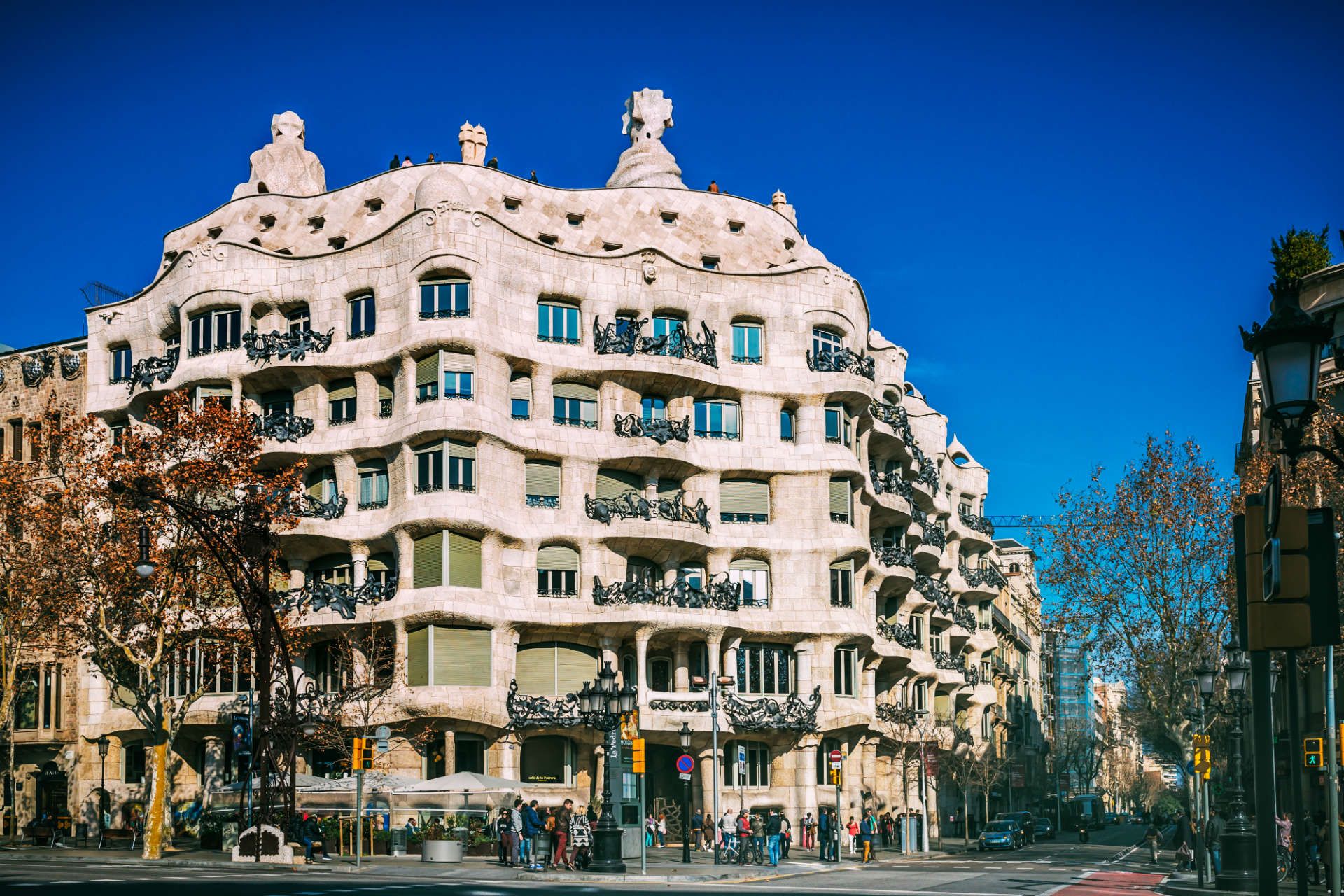
© Loredana Bitculescu/Shutterstock
Barcelona has a golden seafront, with 5km of sandy beaches stretching from Barceloneta to Diagonal Mar.
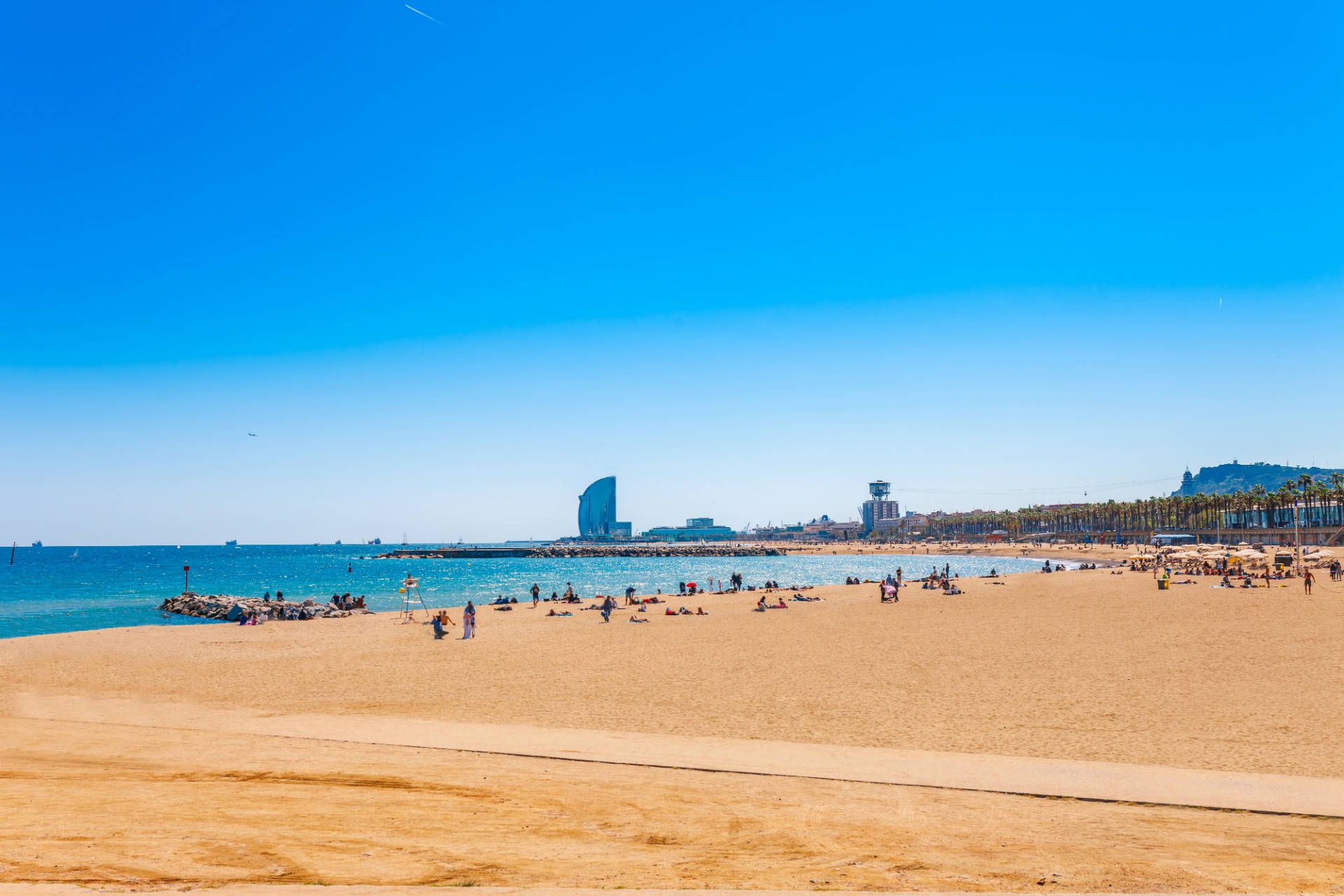
© Oleg_P/Shutterstock
Hopping from bar to bar, sampling the specialities, is the best way to experience some of Barcelona’s finest food.
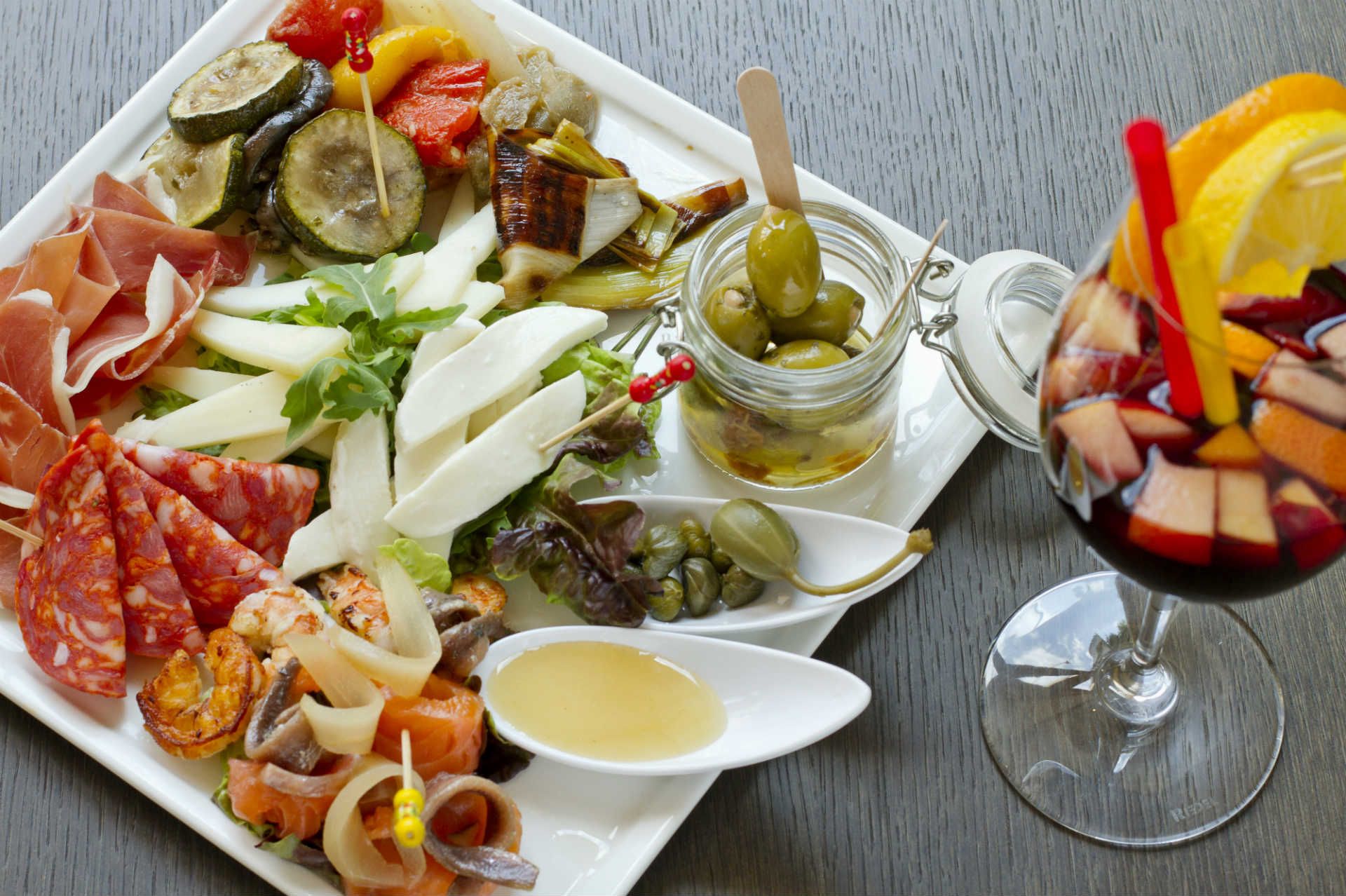
© hitch3r/Shutterstock
The magnificent Camp Nou stadium is the home of FC Barcelona, one of the world’s premier sides, with a cabinet full of trophies to prove it.
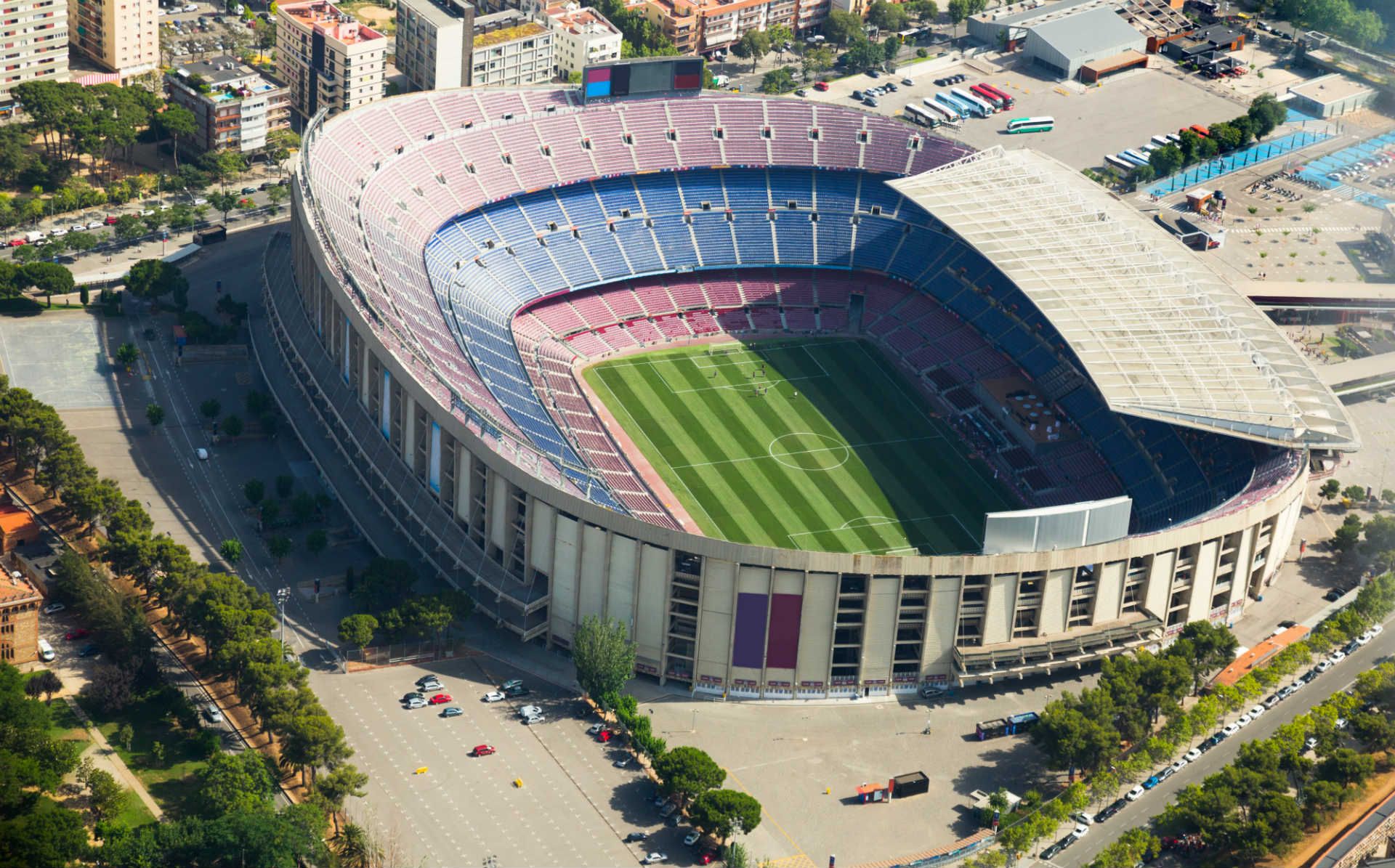
© Iakov Filimonov/Shutterstock
The adventurous Fundació Joan Miró celebrates the work of one of the greatest Catalan artists.
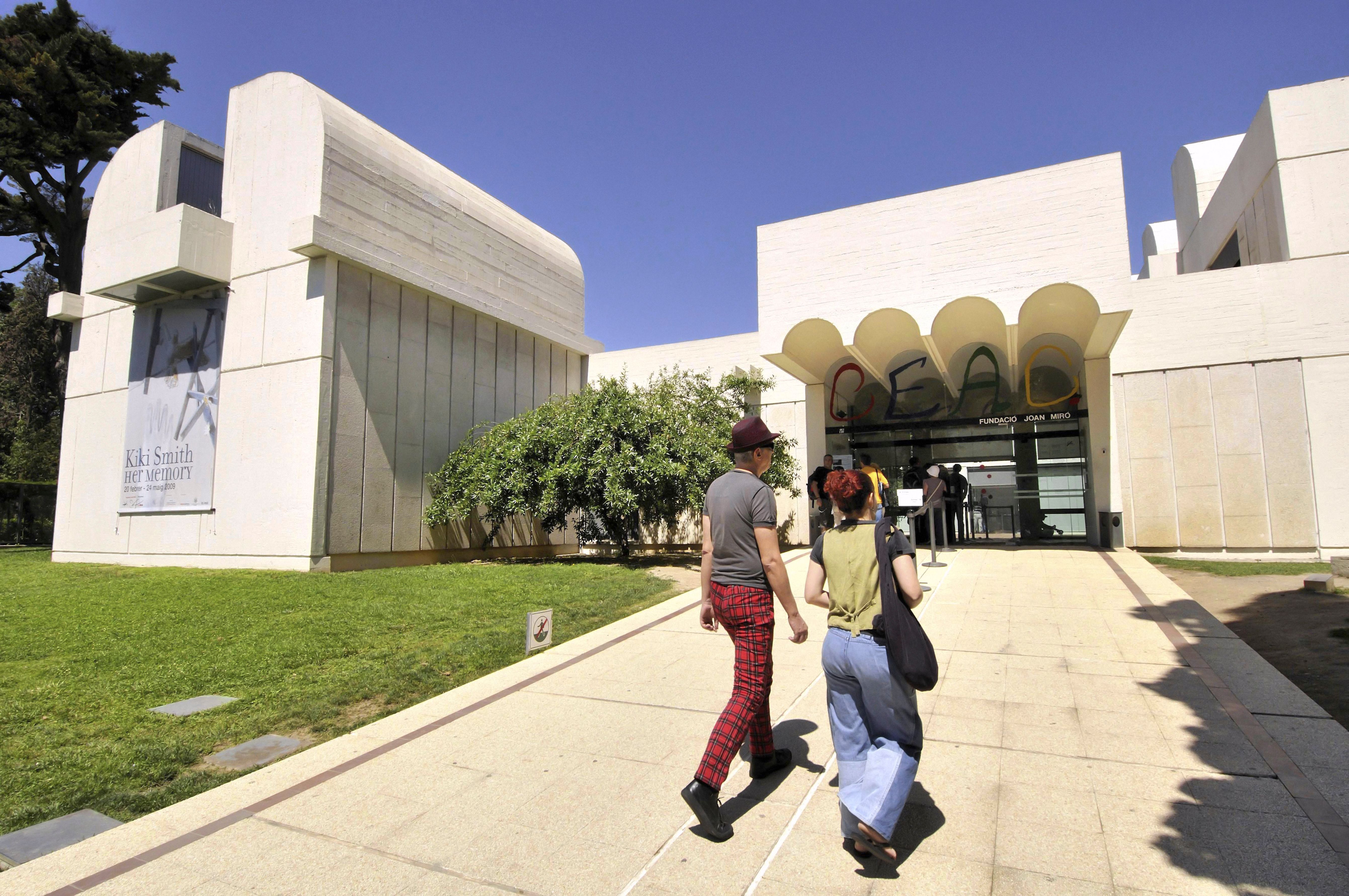
Marvel at the soaring spaces in one of the greatest Gothic cathedrals in Spain.
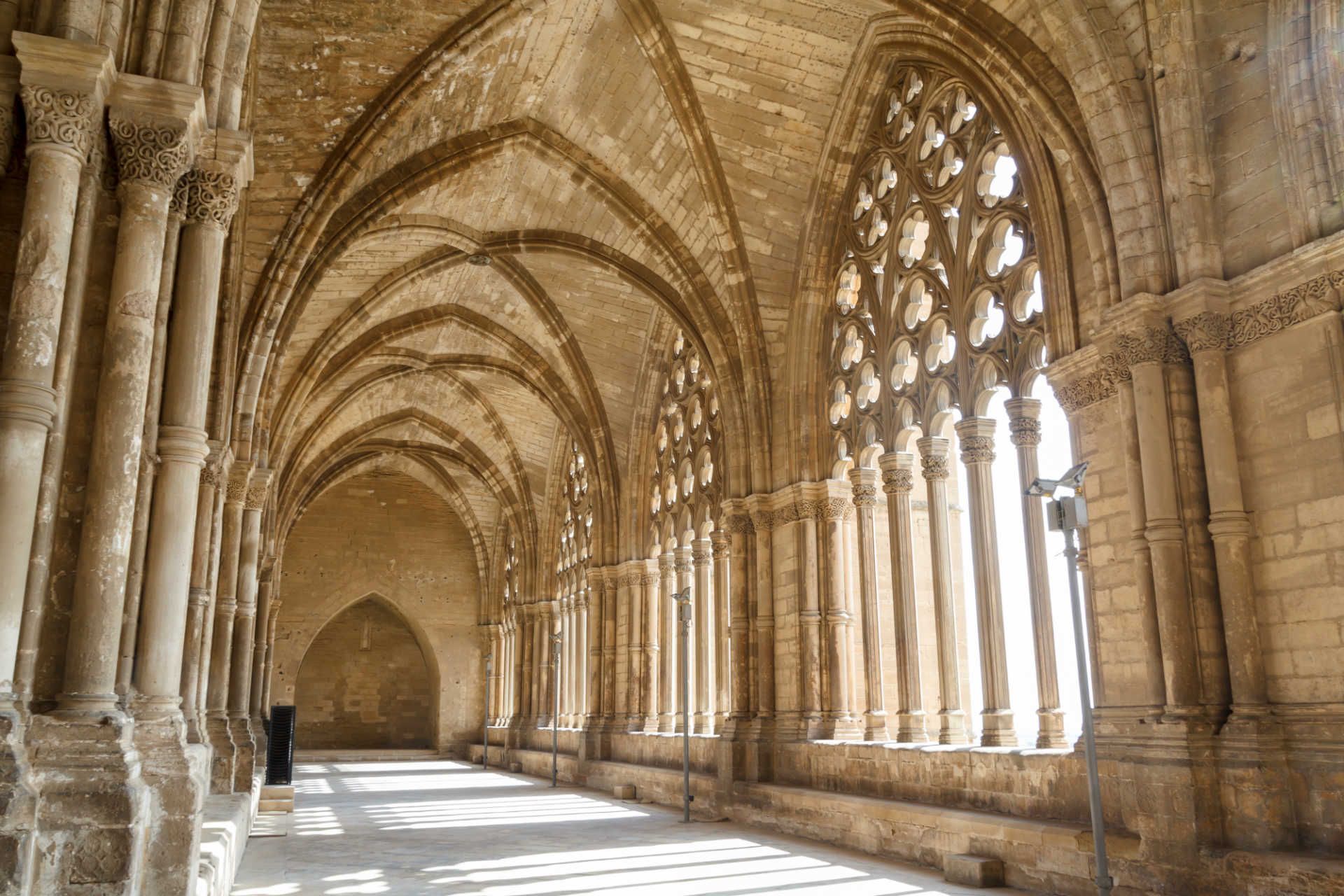
© Jordi C/Shutterstock
Explore the art, sculpture and furniture of modernista Barcelona in this wonderful collection of paintings and artefacts.

© Boule/Shutterstock
Scale the heights of Mount Tibidabo for fantastic views and a wonderful amusement park.
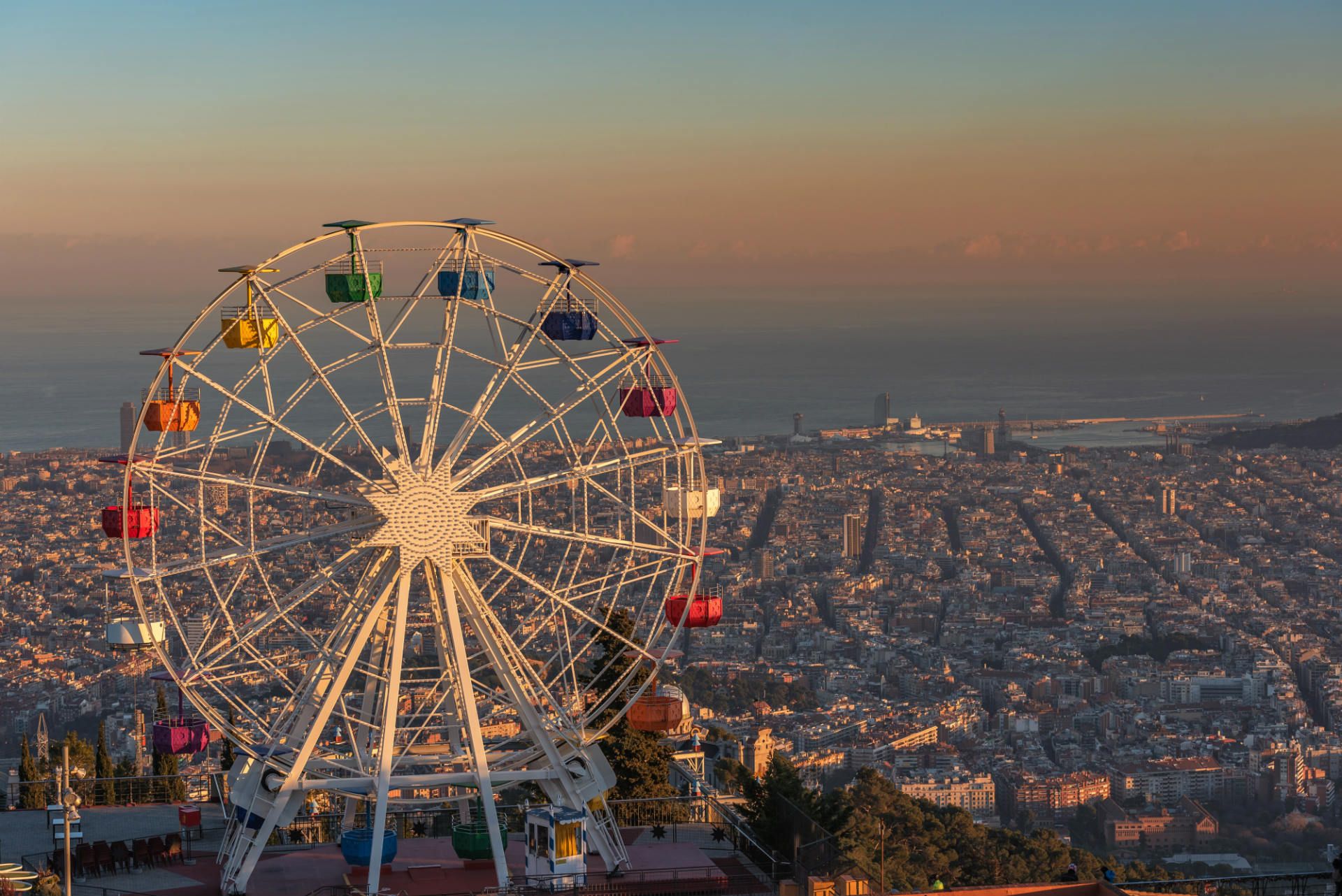
© SueTot/Shutterstock
The “House of Bones” is another modernista masterwork by Antoni Gaudí.

© Dunaeva Natalia/Shutterstock
The city’s best-known market presents an extraordinary range of fresh produce.

© funkyfrogstock/Shutterstock
The National Museum of Art celebrates the grandeur of Romanesque and Gothic art, two periods in which Catalan artists were pre-eminent in Spain.

© TTstudio/Shutterstock
A stroll down Barcelona’s famous thoroughfare is a must for both tourists and locals alike.
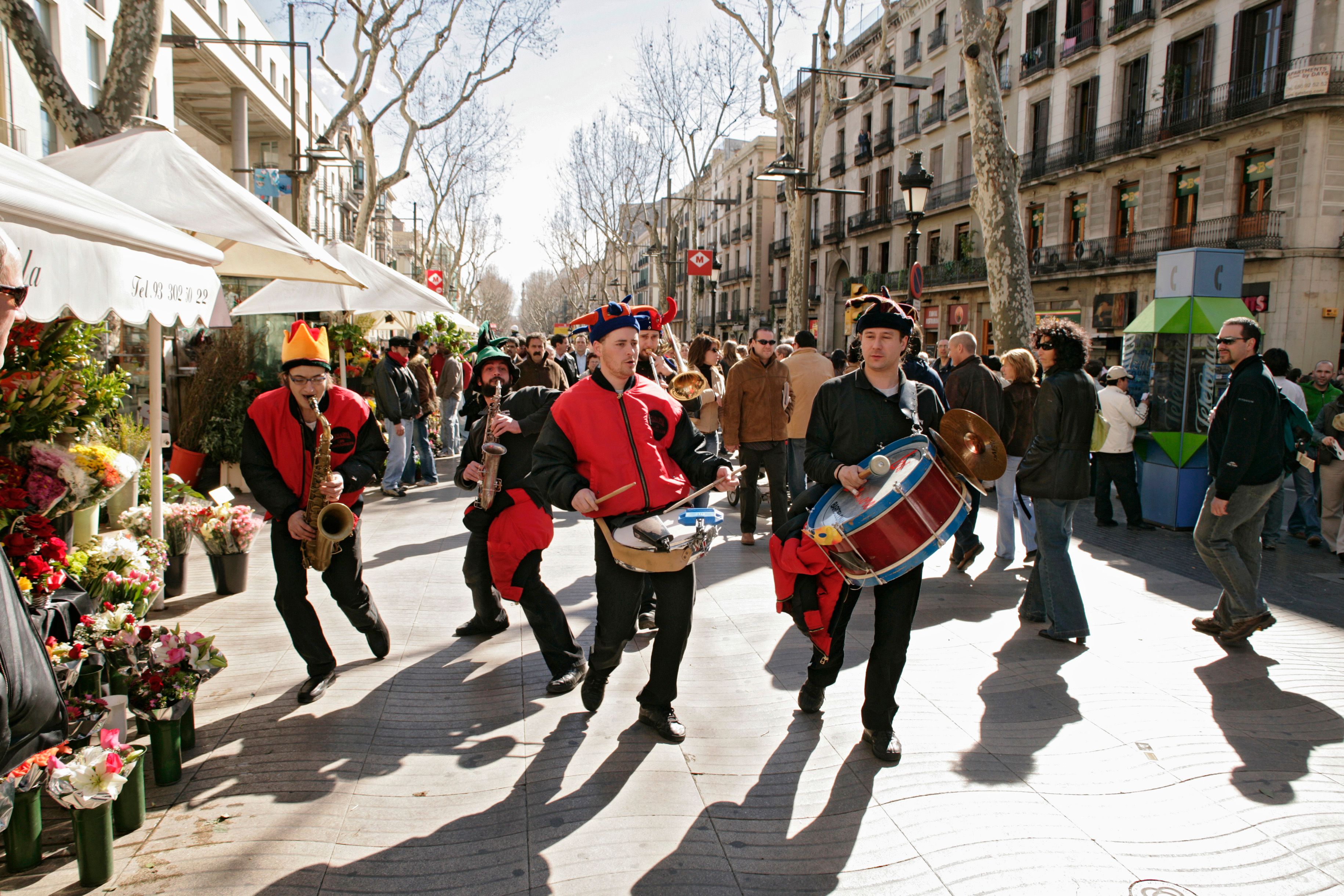
The city’s most extraordinary park is a fantasy land born of Antoni Gaudí’s fertile imagination.

© VLADYSLAV DANILIN/Shutterstock
Trace the genesis of the artist’s genius in the city that Picasso liked to call home.

© Jakez/Shutterstock
The temple dedicated to the Sacred Family is the essential pilgrimage for Gaudí fans.
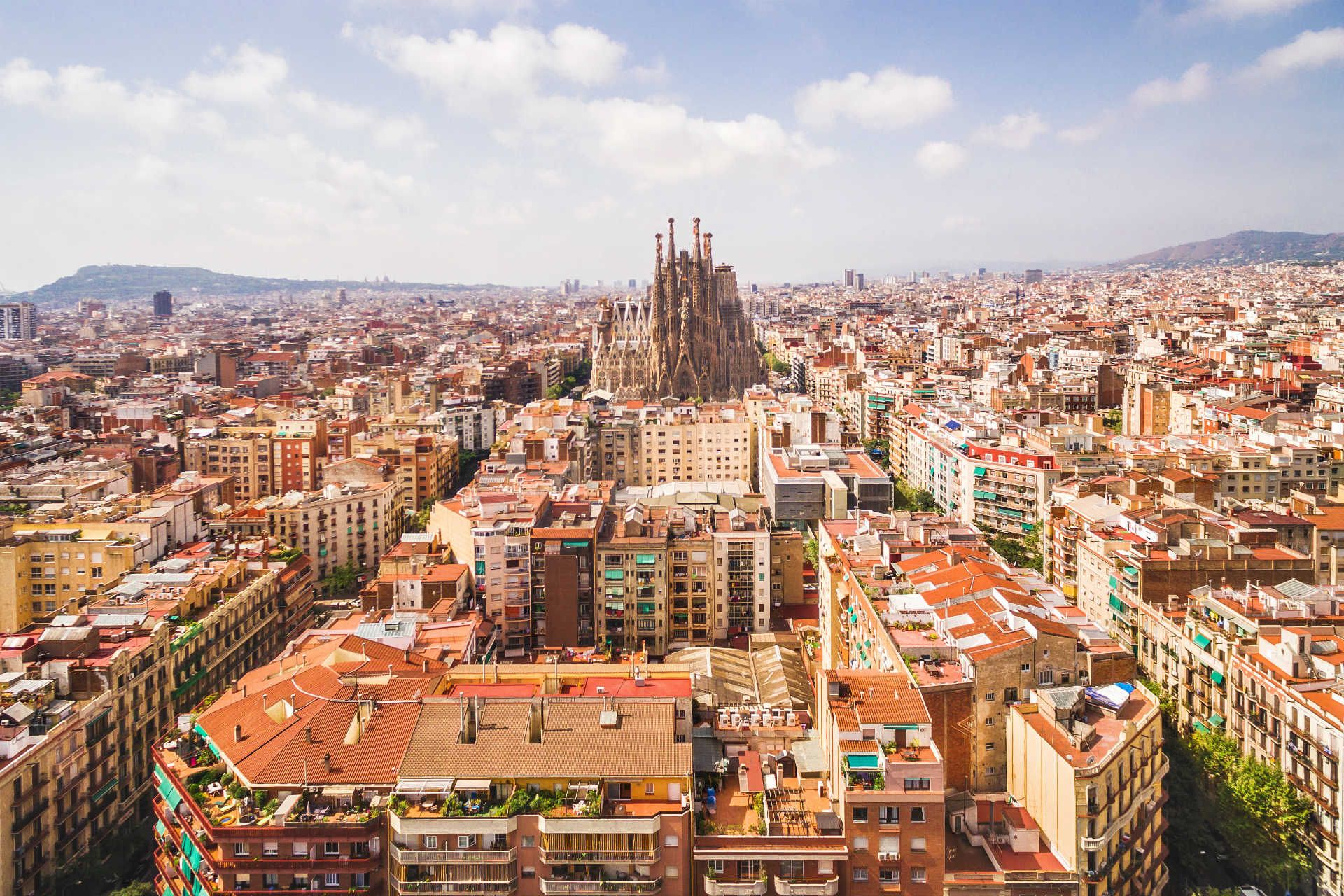
© R.M. Nunes/Shutterstock
Cutting-edge contemporary art exhibitions are at home in El Raval’s signature building.

© Teo Stuivenberg/Shutterstock
Discover Spain's most captivating stories
Use Rough Guides' trusted partners for great rates
written by
Rough Guides Editors
For over 40 years, Rough Guides has been a trusted name in travel, offering expert-curated guides, inspiring articles, and tailor-made trips. Our passionate team of writers and local travel specialists provide in-depth insights into destinations worldwide, from iconic landmarks to hidden gems. We help you travel smarter and experience the world authentically.
Discover Spain – Your go-to guide for travel tips and inspiration.
Discover Spain – Your travel guide.